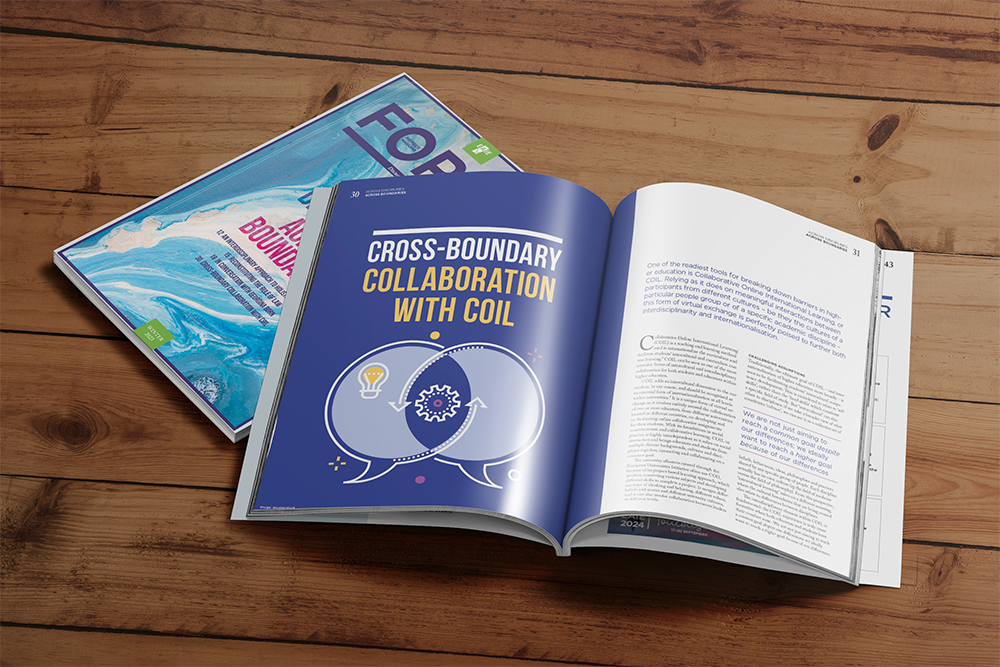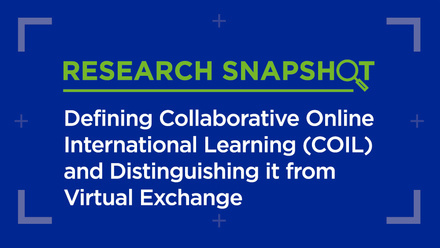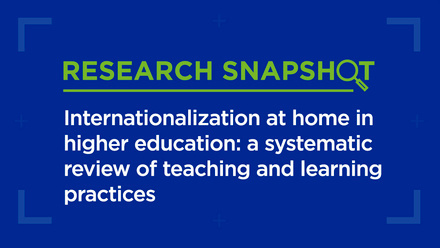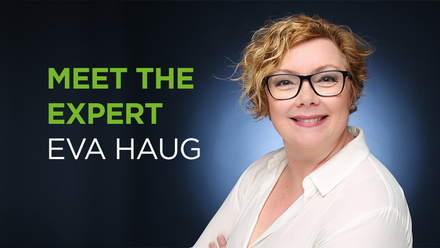Cross-boundary collaboration with COIL

Collaborative Online International Learning (COIL) is a teaching and learning method used to internationalise the curriculum and facilitate students’ intercultural and curriculum content learning. COIL can be seen as one of the most intensive forms of intercultural and interdisciplinary collaboration for both students and educators within higher education.
COIL adds an intercultural dimension to the curriculum, in any course, and COIL: what’s in an acronym? as an essential form of internationalisation at all levels within universities. It is a unique form of virtual exchange as it revolves entirely around the collaboration of two or more educators, from different universities located in different countries, co-developing and co-facilitating online collaborative assignments for their students. With its foundations in social constructivism and collaborative learning, COIL in practice is highly interdependent as it relies on social interaction and brings educators and students from multiple diverse backgrounds, cultures and disciplines together, interacting and collaborating on a common goal.
Each discipline actually has its own ‘culture’
The university alliances created through the European Universities Initiative often use COIL because of its project-based learning approach, which involves connecting various subjects and developing different skills to complete a project. It merges different ways of thinking and behaving, different values, beliefs and norms and different university cultures, and it can also involve collaboration between leaders at different levels.
Challenging assumptions
Traditionally, the ultimate goal of COIL – and internationalisation of higher education more broadly – is seen to be facilitating students’ intercultural competence development. This is considered to relate to ‘soft skills’, rather than the ‘hard skills’ which constitute a specific field of study. But ‘intercultural’ can also relate to disciplines: if we take a broader view of what constitutes ‘culture’, we can see it as a collective set of beliefs, behaviours, ideas, philosophies and practices shared by any specific group of people. Each discipline actually has its own culture (eg the field of medicine versus the field of philosophy). From this perspective, ‘intercultural learning’ takes on a different meaning, where the cultural boundaries that are being crossed also relate to differences between disciplines.
The interdisciplinary element within COIL is fundamental: the COIL experience is truly transformative when both educators and students leave their comfort zone. We are not just aiming to reach a common goal despite our differences; we ideally want to reach a higher goal because of our differences. Going through the COIL experience means challenging our assumptions about the differences between us: both finding differences where they were not expected and realising that presumed differences are often smaller than we think.
Learning from each other
One of the first steps in implementing COIL involves crossing organisational cultures. Educators need to find a suitable COIL partner from a university abroad with whom they can co-develop and co-facilitate the COIL course. This involves the careful consideration of various elements that can differ greatly even between universities in the same country, let alone universities in different countries. It can lead to a lot of surprises that can facilitate or hinder the successful implementation of COIL. When co-designing a COIL course, educators need to consider differences in educational levels, academic calendars, time zones, class size, assessment formats, data protection regulations, technology and so on.
For example, one COIL course brought together physical education (PE) teacher training students from the Netherlands and primary school teacher training students from Ireland to develop an inclusive physical education lesson plan. Teacher training Bachelor’s courses are offered at research universities in Ireland, while most teacher training courses are offered at vocational universities in the Netherlands. In addition, the Irish students were trained as generalist primary school teachers, teaching an array of different subjects, while the Dutch students were being trained only to specialise in PE at different educational levels.
The students participating in this COIL course therefore had different levels of knowledge and were trained in different ways; the Irish students had more theoretical knowledge, while the Dutch students had more practical, specialised knowledge. At first, the educators thought these differences could be problematic – but as the course progressed, these different levels of knowledge and experience complemented one another and resulted in a well-designed lesson plan that took different perspectives into account.
We are not just aiming to reach a common goal despite our differences; we ideally want to reach a higher goal because of our differences
One Irish student said: "The Dutch were very relaxed and chilled out. They were very good at providing real-life examples for PE practices, while we were good at providing the educational theories behind the practices but not the examples."
Another Irish student had this to say: "I learned that PE is a more serious subject in the Netherlands than in Ireland. For example, in the Netherlands, to be able to teach PE at primary school level you have to be a certified PE teacher; in Ireland, this is not the case – you just have to be a certified regular teacher with some PE knowledge."
And a Dutch perspective: "I learned a lot about Irish culture – especially about the Irish school system. In addition, the hurling and Gaelic football clinic was especially valuable to me as a gym teacher, because I can apply this in my gym lessons. It is nice to learn more about sports that we don’t play here in the Netherlands."
This is just one example of how the differences between two programmes can facilitate students’ curriculum content and intercultural learning. There are many more examples of COIL involving students and lecturers from diverse disciplines collaborating and learning from one another.
Limitless potential
COIL has so much to offer and its potential is limitless. The COIL method will only become more popular as universities and educators realise its potential and how it can be used as an inclusive teaching and learning method for both curriculum content and intercultural learning across countries and across disciplines. We envisage COIL becoming even more impactful as it is used in a more intentional way for teaching and learning across boundaries of all kinds.






